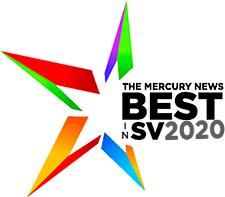
When it comes to fitness, setting the right goals can be the difference between success and falling short. We all know how important consistency is for achieving results, yet many people struggle to stay committed long-term. Research shows that goals aligned with the SMART framework – goals that are Specific, Measurable, Achievable, Relevant, and Time-bound – are far more effective in helping people stay motivated and reach their objectives.
For those seeking to build on an existing fitness routine, a 30% increase in workouts is an ideal target that’s challenging yet manageable, designed to enhance both strength and endurance without overwhelming your schedule. Here’s a look at the research behind why a 30% increase can make a significant difference and how setting this goal can help you stay on track.
The Psychology of SMART Goals and Fitness Success
The SMART goal framework is widely regarded as a proven approach to goal-setting in health and fitness. Goals that are structured around these five principles lead to greater adherence and higher success rates because they help individuals stay motivated, focused, and confident.
Here’s how a 30% increase in your workouts matches each element of the SMART framework:
- Specific: Increasing your workouts by 30% gives a clear target that’s easy to understand and plan for.
- Measurable: Tracking each workout is simple, allowing you to monitor your progress over time.
- Achievable: Research suggests a small, manageable increase is often more sustainable than doubling your workout frequency or setting overly ambitious goals.
- Relevant: This goal directly aligns with the fitness improvements you’re already pursuing.
- Time-bound: Focusing on this goal for a set time period, such as a month, gives you a focused window to stay motivated and build a habit of consistency.
Why 30% Is the Right Amount for Consistency and Progress
A 30% increase is both manageable and effective, encouraging sustainable change rather than short-lived bursts of effort. According to a study in the Journal of Health Psychology, individuals who aim for a moderate increase in their physical activity – in the range of 25-35% more than their regular routine – are more likely to maintain their fitness goals than those who attempt to double their activity.
This “small-step” approach aligns with what’s known in psychology as “incremental goal-setting,” which helps build a gradual, confidence-boosting foundation. By seeing steady, measurable progress, you can boost self-efficacy – the belief in your ability to succeed. When you know you can achieve a goal, you’re more likely to stick with it and feel empowered to push further.
Data on Goal-Setting and Long-Term Adherence
Research from the American Psychological Association supports the idea that people who set manageable, incremental goals are more successful in sticking with their routines. A major reason for this success is consistency: achieving a smaller, realistic goal helps maintain motivation, and maintaining that momentum is crucial. A 30% increase in your workouts isn’t overwhelming, making it less likely to disrupt your schedule or lead to burnout.
Achieving Progress with a SMART Plan
Once you decide to add a 30% increase in your workout routine, it’s important to have a strategy in place. Here are some research-backed methods to help you meet your goal:
- Break it down into weekly increments: Adding an extra class per week is a simple way to reach your 30% increase without adding too much at once.
- Schedule workouts at the start of each week: Studies show that planning ahead and “scheduling” workouts increase the likelihood of attendance and adherence.
- Try something new: Adding a new type of class or switching instructors can help maintain your interest and prevent workout boredom.
- Find a partner: Partnering up with a friend or classmate provides accountability, which, according to Social Science & Medicine, significantly boosts the likelihood of sticking with your goals.
Building a Foundation for Success
Setting a goal to increase your workouts by 30% isn’t only about enhancing your fitness routine. It’s a chance to set and achieve a SMART goal, reinforcing your confidence and discipline along the way. The commitment to small, sustainable goals helps build healthy, long-lasting habits – an investment that pays off far beyond the immediate boost to your fitness.
Whether you’re getting back into fitness or ramping up your routine, setting a 30% increase goal is a realistic, impactful way to challenge yourself while staying consistent. The science is clear: with the right structure and motivation, meaningful progress is well within reach.







